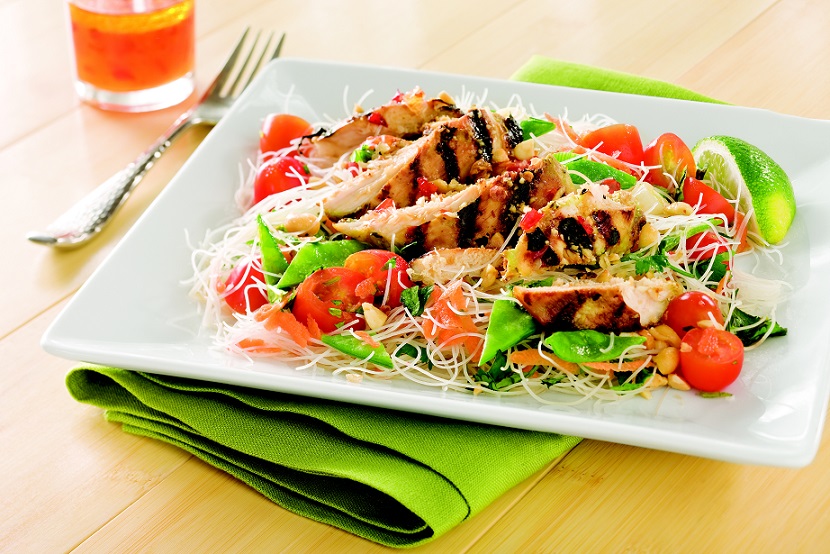For years, consumers have turned to chicken as their go-to protein based on its accessibility and versatility. With more plant-based proteins showing up at grocery stores and restaurants, you have a lot of choices and ways to mix and match protein options from breakfast to dinner and everything in between. That said, compared to many plant-based options, the protein from chicken is of a higher-quality, meaning it has enough of each of the nine essential amino acids – the building blocks of protein – that are needed in the human diet to help build muscle and strengthen bone.
This blog entry was originally posted this week on Chicken Check In.
For centuries, chicken has been one of our many food choices, and it’s America’s favorite protein. Among other nutritional benefits, chicken delivers vital, under-consumed nutrients that many people don’t get enough of, such as magnesium, potassium, choline, vitamin B12 and iron.
Chicken is typically a more affordable option than other types of meat —and shoppers can (almost) always find it at their local grocery store. Taste and nutrition aside, chicken production is more sustainable than ever before. It now takes 75% fewer natural resources to produce the same amount of chicken than it did in 1965.
What else do you need to know about protein from chicken or plant-based protein?
For years, consumers have turned to chicken as their go-to protein based on its accessibility and versatility. With more plant-based proteins showing up at grocery stores and restaurants, you have a lot of choices and ways to mix and match protein options from breakfast to dinner and everything in between.
That said, compared to many plant-based options, the protein from chicken is of a higher-quality, meaning it has enough of each of the nine essential amino acids – the building blocks of protein – that are needed in the human diet to help build muscle and strengthen bone.
You can only get the nine essential amino acids from the foods you eat, and plant-derived foods may have a less favorable amino acid profile if not properly combined, which means they might not be easily usable in the body. Chicken also provides more high-quality protein per 100 grams than many other commonly eaten sources of plant-based protein.
Because of this, it’s important to pair chicken with plants and other plant-based proteins for a winning combination. Check out any of these recipes to see how.
Like plant-based protein, chicken flexes with your eating pattern.
Today, more than ever, you might be looking to try new foods for many reasons.
Whatever diet you choose — from “flexitarian” to a Mediterranean way of eating—we are blessed in this country with a range of protein options. In fact, of the 35 diets analyzed and ranked by U.S. News and World Report in their annual “Best Diets Overall” report, chicken seems to fit into all but seven (e.g. the vegan diet).
Chicken is an important source of protein in the top five ranked Best Diets Overall, which include:
- The Mediterranean Diet
- The DASH Diet
- The Flexitarian Diet
- The WW (Weight Watchers) Diet
- The Mayo Clinic Diet
No matter which category you might fit into, know that chicken is a nutritious, delicious, sustainable and an affordable whole food source of protein that flexes with your eating pattern. In fact, it already has been for centuries.

A healthy way of eating involves many plant-based foods and proteins, as well as chicken.

Nutrition and health experts recommend we eat a well-balanced diet, full of whole foods and proteins, colorful fruits and veggies and healthy fats – with no particular emphasis on plant-based proteins or meat alternatives over protein from animals. Plant-based proteins should not distract from the bigger picture that a healthy dietary pattern includes many plant foods—vegetables, fruits, whole grains, legumes, and nuts—as well as lean meats, like chicken.


